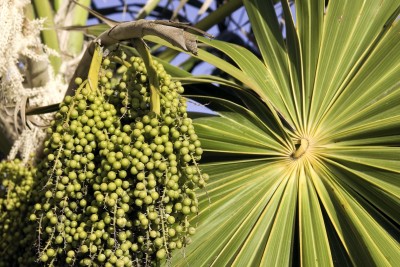Acai Berry - Euterpe oleracea

Common Names: Acai berry, Assai, Aqai, Açaí, Açaí palm, Euterpe oleracea, Palm fruit of Brazil, Amazonian palm berry
Latin Name: Euterpe oleracea
Origin: Europe, South America
Short Introduction
Euterpe oleracea is a tropical palm that thrives in warmth and moisture. In temperate climates, it can be grown indoors as a houseplant; however, an ideal environment for Acai is a heated greenhouse or conservatory where the temperature does not drop below 18 °C (64°F). Despite its preference for wet, marshy areas, Acai should not be overwatered—water moderately and regularly, never allowing the soil to dry out completely.
Interesting fact: Euterpe oleracea is cultivated not just for its fruit but also for its strong, pest-resistant leaves, which can grow up to 3 meters long. These leaves are traditionally used for making hats, brooms, roofs, mats, and more.
Detailed Description
Acai is renowned as a SUPER FOOD due to its exceptional nutritional value.
Botanical Information
Euterpe oleracea, commonly known as Acai, is a palm tree that reaches heights of 15–25 meters. This species thrives along riverbanks, especially in Brazil's floodplains, where it grows slowly and begins bearing its remarkable fruit after four years. Acai palms produce fruit twice a year. The tree features a narrow trunk topped with three to four branches laden with flower clusters. The berries start out green, then, as they ripen, their skin turns a deep blue or nearly black-purple. Each Acai palm can yield up to 20 kg of fruit per year. The berries are about 2.5 cm in diameter and contain a large seed, which makes up nearly 80% of the fruit. The berries grow in large, heavy bunches, with each branch potentially supporting hundreds of prized fruits.
Origin and Distribution
The origins and use of Acai are tied to an Amazonian legend known as the 'Mother Acai.' According to this tale, an indigenous tribe facing famine passed a law allowing only newborns to be eaten for survival. The chief’s daughter eventually gave birth to a daughter herself, who was sacrificed according to this brutal edict. The grieving mother, IACA, prayed daily for another way. One evening, she saw a vision of her child beneath an Euterpe oleracea palm. When she ran to her, the vision vanished like smoke. The next morning, IACA was found under the palm, her gaze fixed on its dark berries. From that time onward, the tribe lived off the berries, never sacrificing another newborn. The palm was named using the reverse of the mother’s name: IACA became Acai.
Acai, or Euterpe oleracea, is native to South and Central America, particularly Brazil, Peru, and Belize. Today, thanks to its beneficial effects on overall health, Acai has gained popularity worldwide, including throughout Europe.
Usage / Dosage
Regulations (Regulation (EC) No 1924/2006 of the European Parliament and Council concerning nutrition and health claims) do not permit us to inform you about the positive effects of this plant on your body. Please consult freely available sources or the scientific literature for more information about its effects.
Traditional Dosage
Acai berry powder is traditionally taken 2 teaspoons in juice, smoothie, or water, three times daily before meals. The recommended course is at least 10 days, with 21 days considered optimal.
Warning:
No contraindications are known.
